
Preetisheel Singh D’souza: Transforming faces, winning awards, and shaping the future of character design
She’s worked on some of the biggest movies in Bollywood including Padmaavat, Gangubai Kathiawadi, Housefull 4, Pushpa: The Rise and Jawan. Meet Preetisheel Singh D’souza, a two-time National Award-winning character designer, recently honoured for her exceptional makeup work in Sanjay Leela Bhansali’s blockbuster, Gangubai Kathiawadi.
In this exclusive interview with Woke India, Preetisheel shares insights into her creative process, challenges faced in period drama makeup, the evolution of Da Makeup Lab, and the inspiration behind the Preetisheel School of Character Design. Check out her perspective on adapting to diverse film industries, the influence of iconic artists on her career, and her vision for the future of character design and makeup in the dynamic world of cinema.
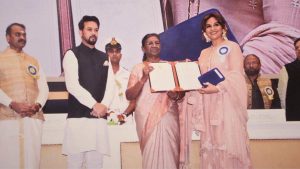
Can you share your initial reaction when you heard the news that you have won the National Film Award for Makeup for the second time?
I felt absolutely elated to be bestowed with such an honour once again. It always feels great to be appreciated for your work, especially on such a huge platform.
Gangubai Kathiawadi is a period drama. What were the unique challenges you faced while designing the characters’ makeup for this film?
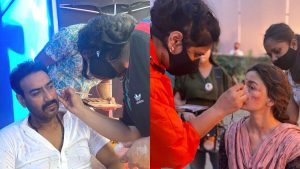
The biggest challenge we would say is putting time into the research in regards to looks for the period it was based in. We did not have enough material to sift through to take as inspiration, and this was a very time-consuming process.
Can you tell us about your journey from starting Da Makeup Lab to it becoming India’s premier makeup and prosthetic studio?
My partner Mark and I had a vision to open a place for makeup and prosthetics, and hence the idea of Da MakeupLab was born. We wanted to have a studio that had makeup, prosthetics, wigs, and character design happen under one roof and were successful in bringing that vision about with Da Makeup Lab.
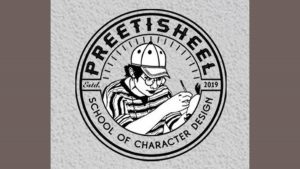
The Preetisheel School of Character Design is a unique initiative. What motivated you to start this school and what all do students learn here?
We started the Preetisheel School of Character Design to make learning about prosthetics easily available for students interested to learn. Here, we teach the students the fundamentals of prosthetic makeup and the know-how of the industry.
How do you stay updated with the latest trends and techniques in makeup and prosthetics, and how do you incorporate them into your work?
Based on the requirements and advancements in the industry, I keep constantly reading, researching, and consulting with artists that have been in the prosthetic industry for a very long time.
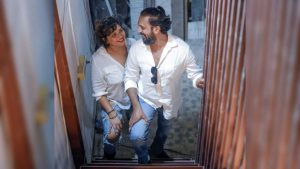
You’ve worked on a variety of projects, from Bollywood to Tollywood. How do you adapt your approach to suit different industries and film genres?
The underlying process, irrespective of the industry, is exactly the same. The only issue we may face while working with the industry in the South would be a language barrier, but we have always managed to overcome the same and work successfully with them.
Are there any specific makeup artists or designers who have inspired your work or had a significant impact on your career?
Every artist definitely has someone they look up to. For me, it has been Greg Cannom and Dick Smith. Their work in Mrs. Doubtfire, Planet of the Apes piqued my interest in what goes into making a character look the way they do.
Your work often involves transforming actors into characters that are vastly different from their natural appearance. How do you ensure that the characters’ personalities shine through the makeup and prosthetics?
The actors get all the credit here. While we bring the director’s idea of the character to life, the actor is the only person who can make the character reach the level of reality the director wishes to get through on screen.
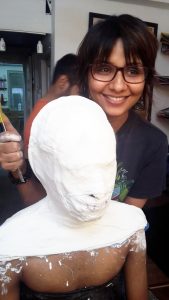
Can you discuss the collaboration process between a character designer and the director or costume designer to create a cohesive look for a film?
I sit with the director and understand from them what they visualize their character to be and the idea for their film as well. I also take time to know if there are any specific traits or quirks that they wish for the character to have. Once there is a clear understanding of the same, only then do we start with the designing process. There is a constant back and forth with the director until they give us a go-ahead on the design created.
What is your favorite part of the character design process, and why?
Each step of the process of creating the character is important; however, look tests are my favorite part of the process because that is where I can see the character come to life.
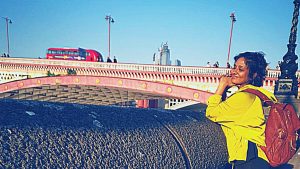
The film industry can be demanding with tight schedules and long hours. How do you manage your work-life balance, especially considering your busy schedule?
My family and my team play a vital role here. Each project and its requirements are streamlined by the team effectively, and this helps me take time out of work to go home to my family. Work can get hectic on days, and that is where my family steps up and makes it easier for me to focus on work.
In your opinion, what is the future of character design and makeup in the film industry, and how do you see it evolving in the coming years?
The field of character design has already come a long way from where it started out. There was a time when an actor needed to look like an actor. Makeup was used to only enhance their existing features. When we look at the industry today, there is a lot of work put in to transform an actor into the character that they play on screen.
